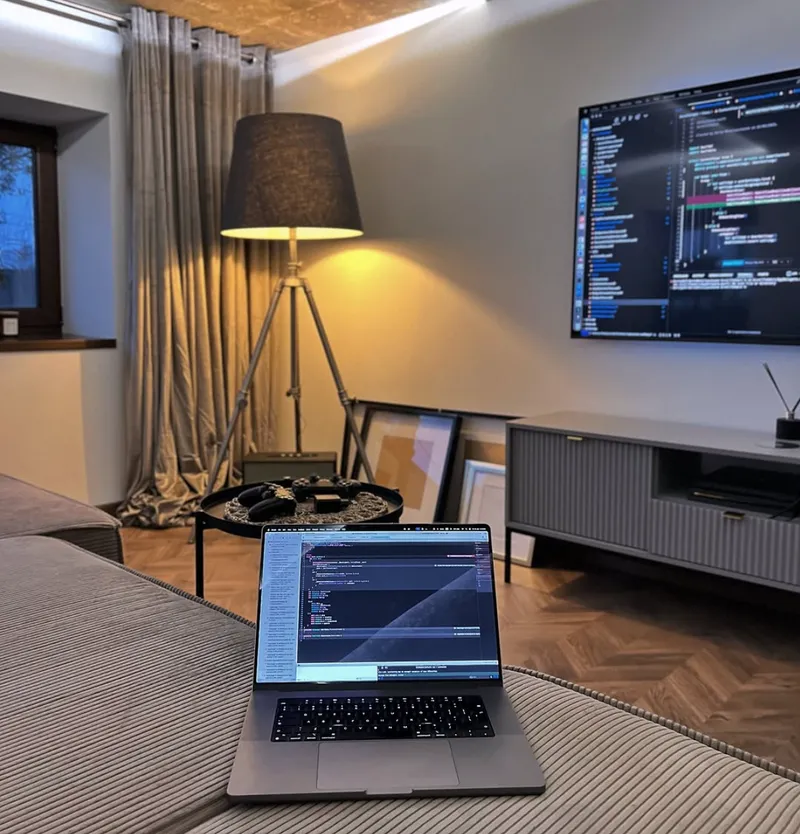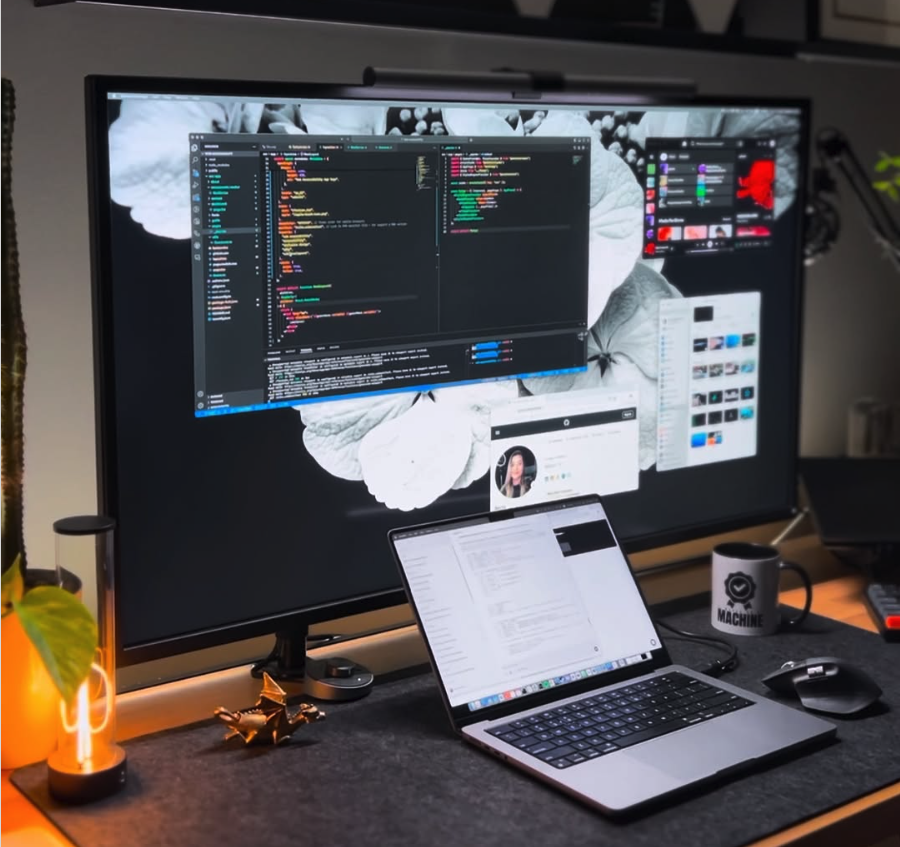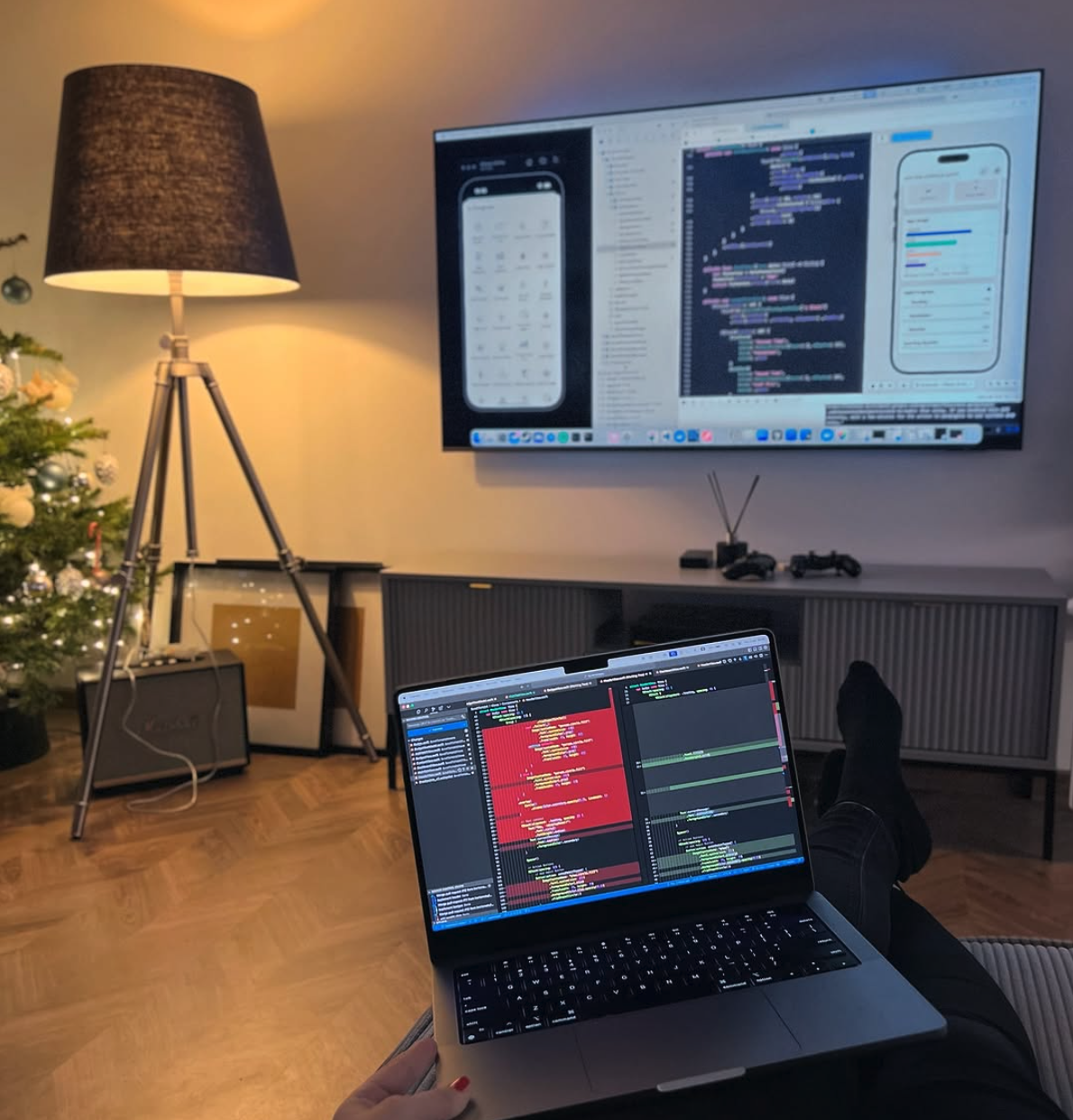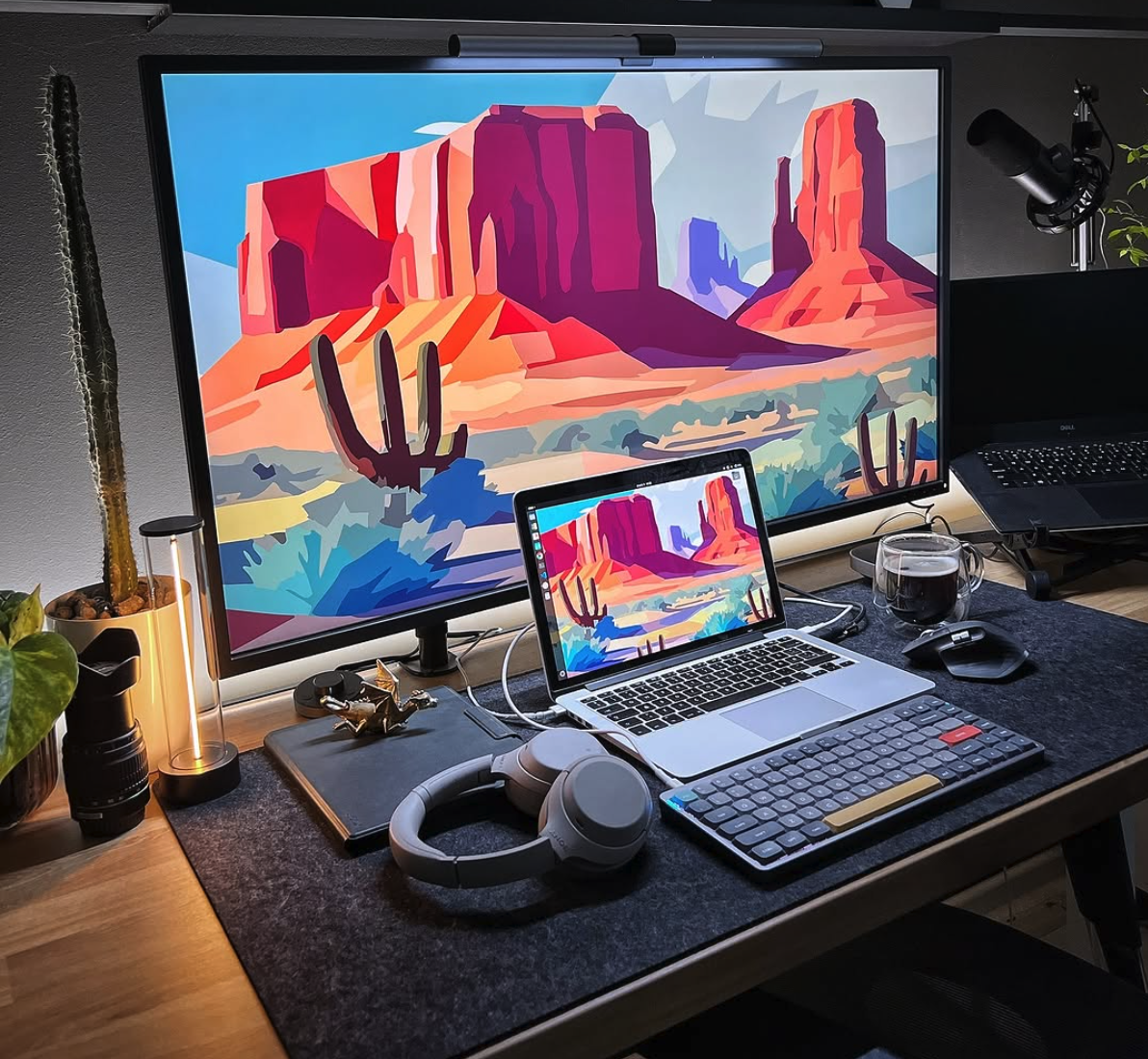Tailwind CSS - A Beginner Guide
Tailwind CSS - a utility-first framework that will revolutionize how you style your web applications.

Tailwind CSS has revolutionized the way developers approach web styling. Unlike traditional CSS frameworks that provide pre-designed components, Tailwind offers low-level utility classes that let you build completely custom designs without leaving your HTML.
What is Tailwind CSS?Tailwind CSS is a utility-first CSS framework packed with classes like flex, pt-4, text-center, and rotate-90 that can be composed to build any design, directly in your markup. It's highly customizable and provides a direct mapping between your HTML and styling.
.blue-button with multiple properties, you'd simply add classes like bg-blue-500 text-white p-2 rounded directly to your button element.
Essential Project Setup #
Setting up Tailwind CSS properly is crucial for a successful project. Here's a comprehensive guide to get you started:
1. Installation
# Install Tailwind CSS via npm npm install -D tailwindcss postcss autoprefixer # Initialize Tailwind CSS
npx tailwindcss init -p
• tailwindcss: The core Tailwind CSS framework
• postcss: A tool for transforming CSS with JavaScript plugins
• autoprefixer: Automatically adds vendor prefixes to CSS rules (like -webkit- or -moz-) for better browser compatibility
The -p flag creates both tailwind.config.js and postcss.config.js files, which is the recommended setup.
Edit your tailwind.config.js file to include all template files:
/<em> @type {import('tailwindcss').Config} </em>/ module.exports = { content: ['./src/<em>/</em>.{js,jsx,ts,tsx}', './public/index.html'], theme: { extend: {}, }, plugins: [],
};
content array tells Tailwind which files to scan for class names. This is important for the purging process (removing unused CSS) in production. The pattern "./src//.{js,jsx,ts,tsx}" means "look at all JavaScript and TypeScript files in the src directory and its subdirectories."
3. Create Your CSS File
Create a CSS file (e.g., src/index.css) with the Tailwind directives:
@tailwind base; @tailwind components;
@tailwind utilities;
• @tailwind base: Injects Tailwind's base styles, which are a set of sensible defaults
• @tailwind components: Injects Tailwind's component classes
• @tailwind utilities: Injects Tailwind's utility classes
In your main JavaScript file (e.g., src/index.js for React):
import './index.css';
// Rest of your app code
For a production-ready setup, add these plugins to optimize your CSS:
# Install optimization plugins
npm install -D @fullhuman/postcss-purgecss cssnano
Update your postcss.config.js:
module.exports = { plugins: { tailwindcss: {}, autoprefixer: {}, ...(process.env.NODE_ENV === 'production' ? { '@fullhuman/postcss-purgecss': { content: ['./src/<em>/</em>.{js,jsx,ts,tsx}', './public/index.html', ], defaultExtractor: content => content.match(/[\w-/:]+(?<!:)/g) || [], }, cssnano: { preset: 'default', }, } : {}), },
};
• purgecss: Removes unused CSS classes, dramatically reducing file size
• cssnano: Compresses and optimizes your CSS for production
What does this configuration mean? It applies the optimization plugins only in production mode (NODE_ENV === 'production'), keeping your development experience fast while ensuring optimized code for your users.
Basic Usage #
Tailwind's power comes from its utility classes. Here's a simple example of a button styled with Tailwind:
<button class="bg-blue-500 hover:bg-blue-700 text-white font-bold py-2 px-4 rounded" <blockquote class="pl-4 border-l-4 border-gray-300 italic">Click me</blockquote>
</button>
This creates a blue button with white text, bold font, appropriate padding, and rounded corners. When hovered, it changes to a darker blue.
Breaking down these classes:• bg-blue-500: Sets the background color to a medium blue (500 is the shade intensity)
• hover:bg-blue-700: Changes the background to a darker blue on hover
• text-white: Sets the text color to white
• font-bold: Makes the text bold
• py-2: Adds padding of 0.5rem (8px) on the top and bottom (y-axis)
• px-4: Adds padding of 1rem (16px) on the left and right (x-axis)
• rounded: Adds a border radius of 0.25rem (4px) for rounded corners
Tailwind's responsive design system is based on a mobile-first approach, making it intuitive and powerful. Let's explore how to use it effectively:
Responsive BreakpointsTailwind provides five default breakpoints that you can use as prefixes:
sm: 640px and up md: 768px and up lg: 1024px and up xl: 1280px and up
2xl: 1536px and up
By default, unprefixed utilities apply to all screen sizes, while prefixed utilities apply at the specified breakpoint and above:
<!-- This element will be full-width on mobile and half-width on screens 640px and wider --> <div class="w-full sm:w-1/2"> <!-- Content -->
</div>
w-full (width: 100%) applies to all screen sizes by default, but sm:w-1/2 (width: 50%) overrides it only on screens 640px and wider.
Responsive Component Example
Here's a complete example of a responsive card component:
<div class="max-w-sm mx-auto bg-white rounded-xl shadow-md overflow-hidden md:max-w-2xl" <blockquote class="pl-4 border-l-4 border-gray-300 italic"><div class="md:flex"></blockquote> <div class="md:shrink-0"> <img class="h-48 w-full object-cover md:h-full md:w-48" src="/img/building.jpg" alt="Modern building" /> </div> <div class="p-8"> <div class="uppercase tracking-wide text-sm text-indigo-500 font-semibold" > Company retreats </div> <a href="#" class="block mt-1 text-lg leading-tight font-medium text-black hover:underline" > Incredible accommodation for your team </a> <p class="mt-2 text-slate-500"> Looking to take your team away on a retreat to enjoy awesome food and take in some sunshine? We have the perfect location. </p> </div> </div>
</div>
md:flex class creates a side-by-side layout, and md:shrink-0 prevents the image from shrinking. The image dimensions also change from full-width with fixed height on mobile (h-48 w-full) to fixed width with full height on larger screens (md:h-full md:w-48).
Responsive Design Best Practices
- Start with mobile layouts first
Design for the smallest screen first, then progressively enhance for larger screens.
- Use container queries when needed
For complex components, consider Tailwind's container query plugin:
npm install -D @tailwindcss/container-queries
Then add to your config:
javascript
// tailwind.config.js
module.exports = {
plugins: [require('@tailwindcss/container-queries')],
};
<strong>What are container queries?</strong> Unlike media queries that respond to the viewport size, container queries respond to the size of a parent container. This allows components to adapt based on their available space rather than the entire screen size.
<strong>Create responsive navigation patterns</strong>
What's happening here? The desktop navigation menu (md:flex) is hidden on mobile screens (hidden), while the mobile menu button is hidden on desktop (md:hidden). This creates a responsive navigation pattern where users see a hamburger menu on small screens and a full horizontal menu on larger screens.
Building Components
While Tailwind is utility-first, you can extract components using the @apply directive in your CSS:
@layer components {
.btn-primary {
@apply py-2 px-4 bg-blue-500 text-white font-semibold rounded-lg shadow-md hover:bg-blue-700 focus:outline-none focus:ring-2 focus:ring-blue-400 focus:ring-opacity-75;
}
}
Then use it in your HTML:
<button class="btn-primary">Save changes</button>
@layer components do? It tells Tailwind that these styles belong in the components layer, which helps maintain the proper order of CSS rules and ensures that utilities can still override component styles when needed.
When should you extract components? When you find yourself repeating the same set of utility classes across multiple elements, it's a good sign that you should extract them into a reusable component class.
Dark Mode
Tailwind makes implementing dark mode simple:
// tailwind.config.js module.exports = { darkMode: 'class', // or 'media' // ...
};
Then in your HTML:
<div class="bg-white dark:bg-gray-800"> <h1 class="text-gray-900 dark:text-white">Dark mode is awesome</h1>
</div>
• 'class': Dark mode is toggled by adding a .dark class to the element, giving you manual control
• 'media': Dark mode automatically follows the user's system preferences using the prefers-color-scheme media query
dark: prefixed classes work? They only apply when dark mode is active. In the example above, the background is white and text is dark gray by default, but in dark mode, the background becomes dark gray and text becomes white.
Custom Configuration #
Tailwind is highly customizable. You can extend or override the default theme:
// tailwind.config.js module.exports = { theme: { extend: { colors: { 'brand-blue': '#1992d4', }, spacing: { 72: '18rem', 84: '21rem', 96: '24rem', }, }, },
};
extend do? It adds your custom values to Tailwind's defaults rather than replacing them. This means you can use both text-red-500 (a default color) and text-brand-blue (your custom color).
How do you use these custom values? Just like built-in utilities: bg-brand-blue or p-84.
Performance Optimization #
For production, it's crucial to optimize your Tailwind CSS:
- Enable JIT (Just-In-Time) Mode
// tailwind.config.js module.exports = { mode: 'jit', // ...
};
<strong>What is JIT mode?</strong> It generates your CSS on-demand as you write your HTML, rather than generating all possible utility classes upfront. This dramatically improves build times and reduces file size.
<strong>Minimize CSS with PurgeCSS</strong>
Ensure your content paths are correctly configured to remove unused CSS.
<strong>How does PurgeCSS work?</strong> It scans your HTML and JavaScript files for class names and removes any CSS that isn't being used, often reducing file sizes by 90% or more.
<strong>Use CDN for rapid prototyping only</strong>
For production, always use the build process to optimize your CSS.
<strong>Why not use CDN in production?</strong> CDN versions include all of Tailwind's utilities, resulting in a large file size (>3MB). The build process removes unused CSS, often reducing the size to <10KB.
<strong class="text-lg">Utility-First Workflow</strong>
The utility-first workflow encourages rapid prototyping and iteration:
<strong>Start with a basic HTML structure</strong>
Begin with semantic HTML elements that describe your content.
<strong>Apply utility classes to style elements</strong>
Add Tailwind classes directly to your HTML elements to style them.
<strong>Identify repeated patterns</strong>
Look for groups of utilities that you use together frequently.
<strong>Extract components as needed</strong>
Use @apply or component frameworks to extract reusable patterns.
<strong>Customize the design system as your project evolves</strong>
Extend Tailwind's configuration to match your project's needs.
<strong>Why is this workflow efficient?</strong> It eliminates the context-switching between HTML and CSS files, reduces the need to name things, and allows you to make changes directly where you need them.
<strong class="text-lg">Extracting Components</strong>
For reusable patterns, extract components using:
<strong>JavaScript components (React, Vue, etc.)</strong>
Create reusable components in your JavaScript framework.
jsx
// React example
function Button({ children, primary }) {
return (
className={px-4 py-2 rounded ${primary ? 'bg-blue-500 text-white' : 'bg-gray-200 text-gray-800'}}
>
{children}
);
}
2. <strong>Template partials/includes</strong>
Use your templating system to create reusable snippets.
{{> button text="Click me" primary=true}}
CSS abstractions with@apply
Use Tailwind's @apply directive to create reusable CSS classes.
.btn {
@apply px-4 py-2 rounded;
}
.btn-primary {
@apply bg-blue-500 text-white;
}
Which approach should you choose? It depends on your project. JavaScript components are best for interactive elements, template partials for static markup, and CSS abstractions for simple styling patterns.
Conclusion #
Tailwind CSS offers a refreshing approach to web styling that prioritizes flexibility and speed. By embracing utility classes, you can build custom designs faster without writing custom CSS.
The learning curve might seem steep at first, but once you become familiar with the utility classes, you'll find yourself building interfaces more rapidly than ever before.
Happy coding with Tailwind CSS!
Resources and Documentation #
To further your Tailwind CSS journey, here are some essential resources:
Official Documentation• Tailwind CSS Official Documentation - Comprehensive guides and references
• Tailwind CSS GitHub Repository - Source code and issues
• Tailwind UI - Official component library (paid)
• Tailwind Play - Official playground for testing Tailwind CSS
Learning Resources• Tailwind CSS: From Zero to Production - Official video series
• Awesome Tailwind CSS - A curated list of Tailwind resources
• Tailwind CSS Cheat Sheet - Quick reference for utility classes
Plugins and Extensions• Tailwind CSS IntelliSense - VS Code extension for autocompletion
• Headless UI - Unstyled, accessible UI components
• Tailwind Forms - Form styling plugin
• Tailwind Typography - Beautiful typography defaults
Community Resources• Tailwind CSS Discord - Official community for help and discussion
• Tailwind CSS Blog - Official blog with updates and tutorials
• Tailwind Talk - GitHub discussions
Starter Templates• Tailwind Toolbox - Free templates and components
• Tailblocks - Ready-to-use Tailwind CSS blocks
These resources will help you master Tailwind CSS and stay up-to-date with the latest developments in this rapidly evolving framework.


